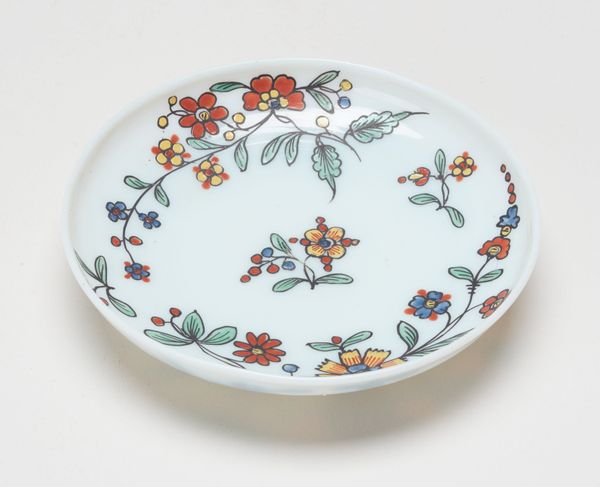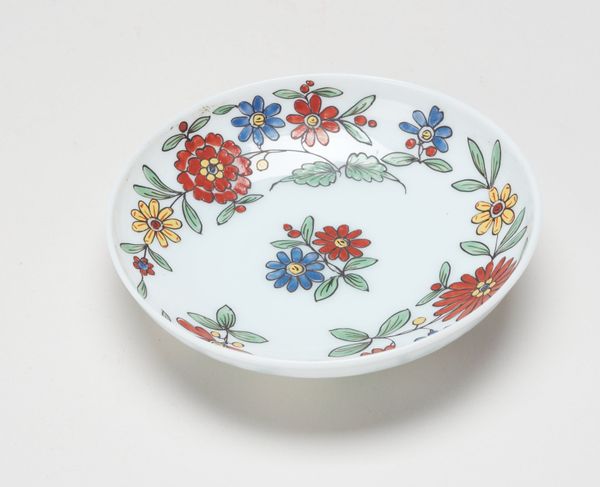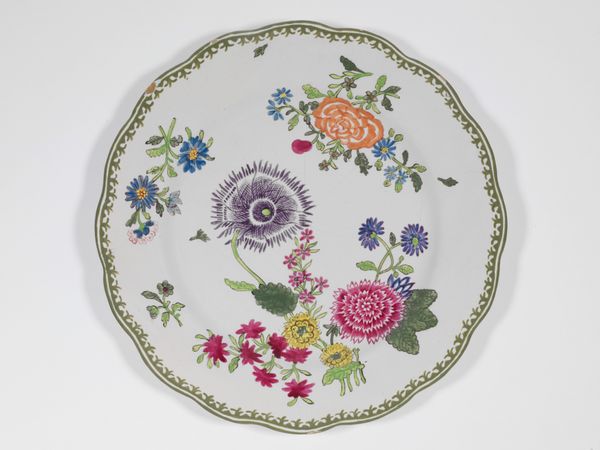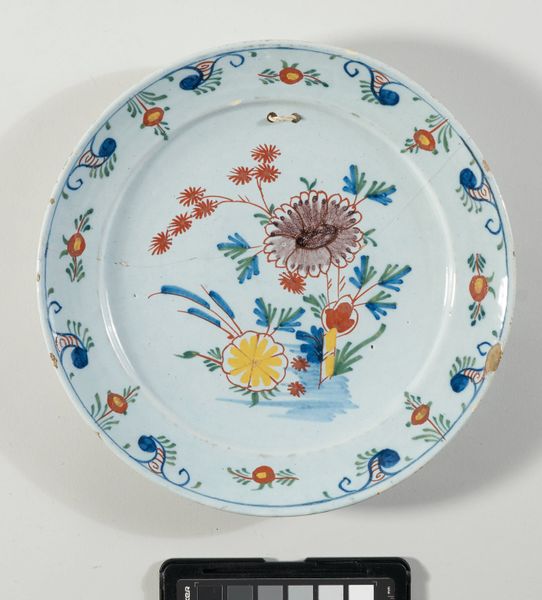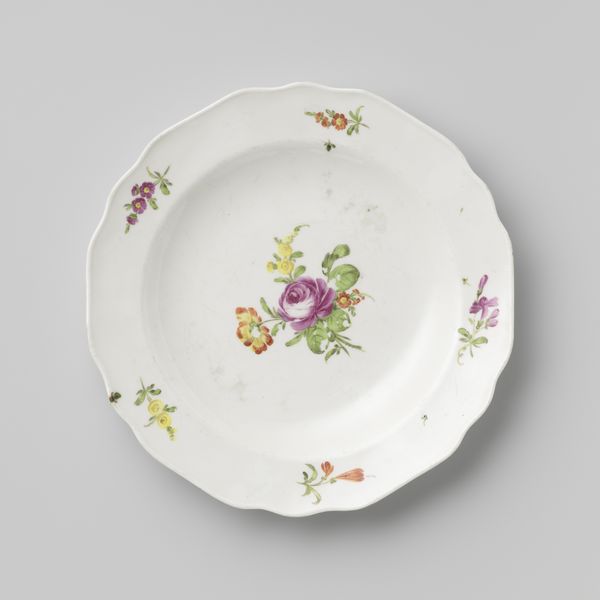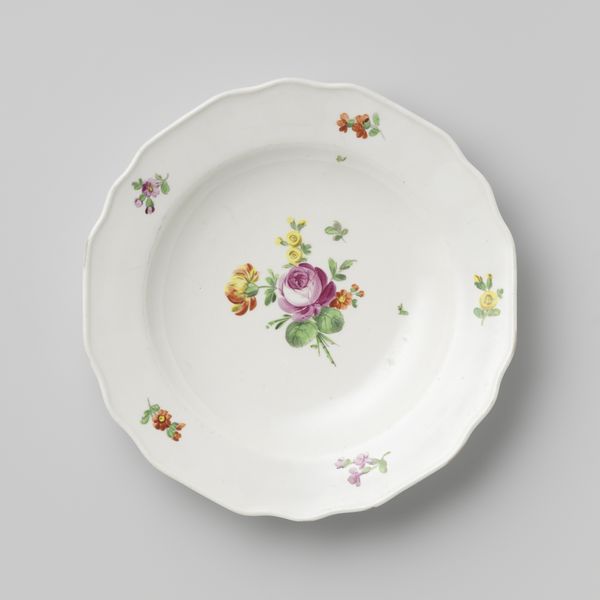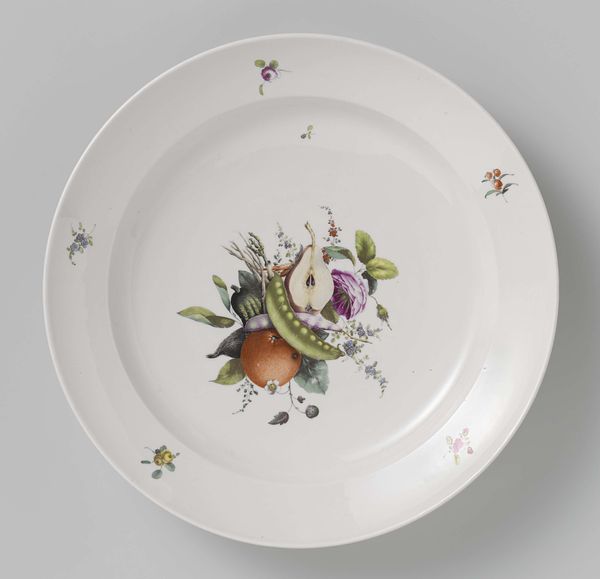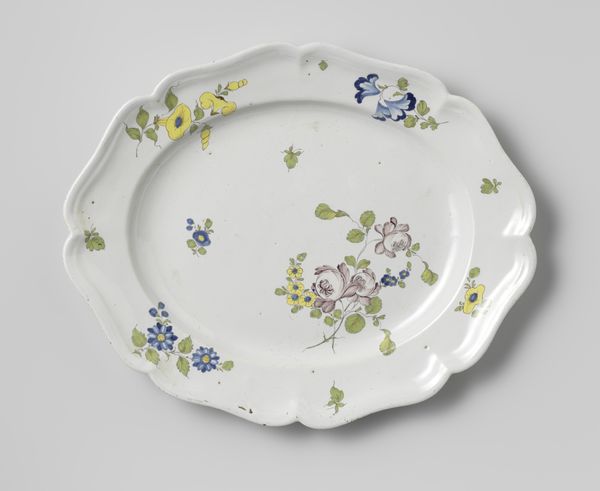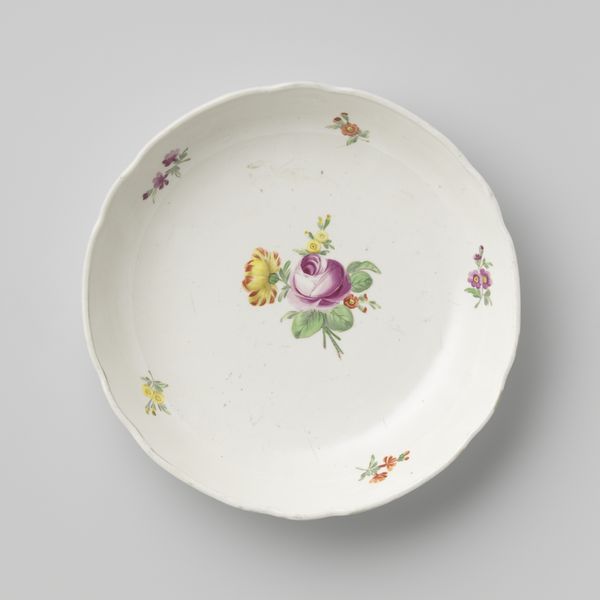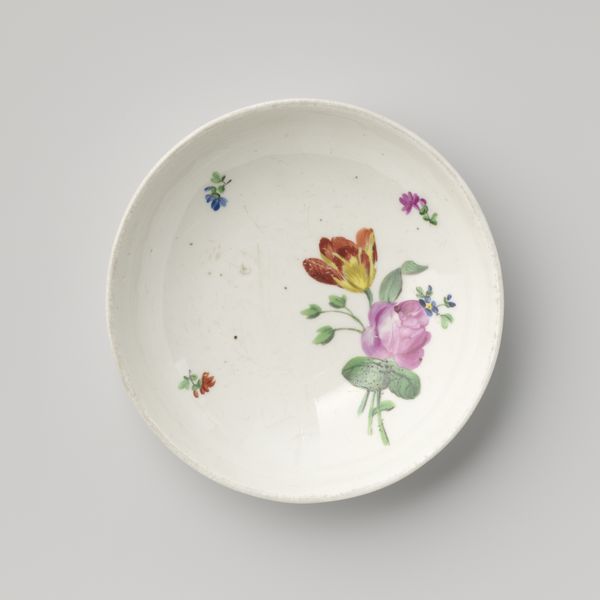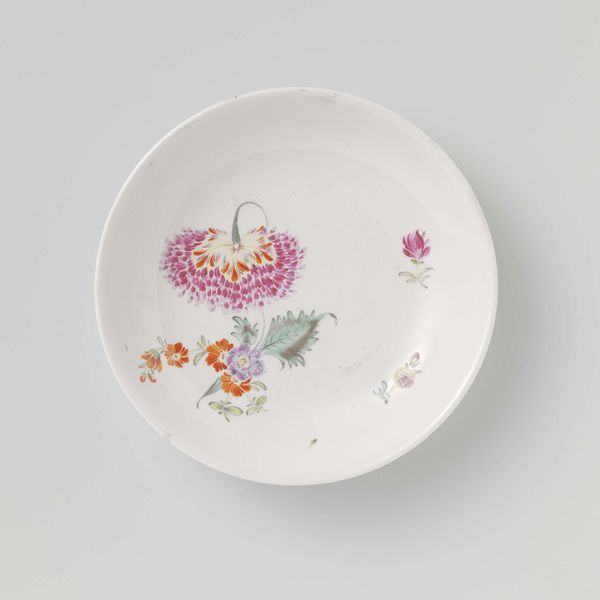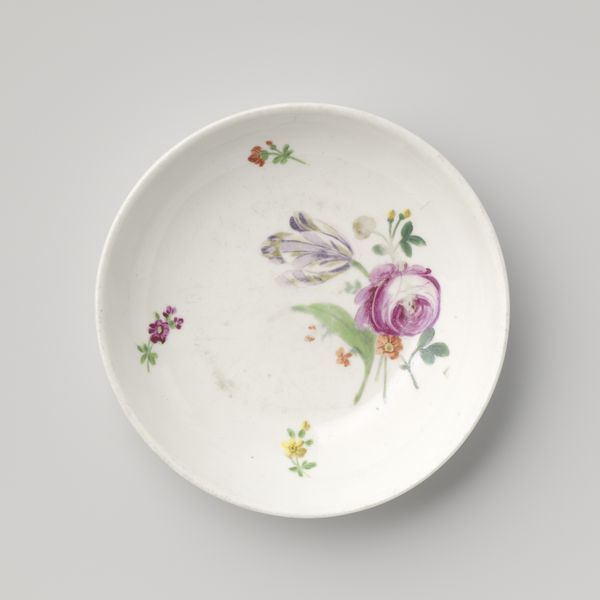
tempera, painting, ceramic, glass
#
tempera
#
pottery
#
painting
#
ceramic
#
glass
#
folk-art
#
ceramic
#
watercolour illustration
#
decorative-art
#
rococo
Dimensions: 3/4 x 4 1/2 x 4 1/2 in. (1.9 x 11.43 x 11.43 cm)
Copyright: Public Domain
Curator: This is an 18th-century "Saucer" currently held in the collection of the Minneapolis Institute of Art. Editor: My immediate reaction is how delicately the colours interact! The floral patterns create a visually pleasing rhythm around the circumference, even a sort of lighthearted joy. Curator: Right! What we are observing is a fine example of the decorative arts tradition and its reliance on folk-art motifs—an object likely created within specific workshops or familial settings where specialized skills related to painting and ceramic production were cultivated. Editor: And the material presence can’t be overlooked. Its elegant symmetry establishes a comforting sense of balance—red and blue are the predominant colours, each subtly offset by green and hints of yellow, with forms radiating from a central medallion! Curator: Yes, precisely—the Rococo influences become obvious. The social use-value of this saucer also demands our attention. Consider how everyday rituals were infused with beauty, perhaps to highlight status, or simply to elevate the domestic sphere! Editor: Looking closely, one notices how the painter deployed line, form, and space so intelligently; how each flower is positioned and angled. It speaks to a well considered structural system at play within these boundaries. Curator: Agreed. Beyond its pure visual appeal, understanding the craftsmanship involved—mixing the tempera paints, firing the ceramic at precise temperatures, reveals the collaborative, hands-on nature of artmaking during this epoch! Editor: Indeed. But ultimately the success comes down to the compositional relationships...the internal cohesion between color and space, resulting in a wholly resolved work of art! Curator: Well, in that case we’re circling back to how its origins within a tangible material reality affect its value. Editor: Quite! Thanks for sharing this moment, I leave with fresh appreciation for this charming artifact! Curator: And I'm now more mindful of how aesthetic pleasure intertwines with craft production. Thanks!
Comments
No comments
Be the first to comment and join the conversation on the ultimate creative platform.

